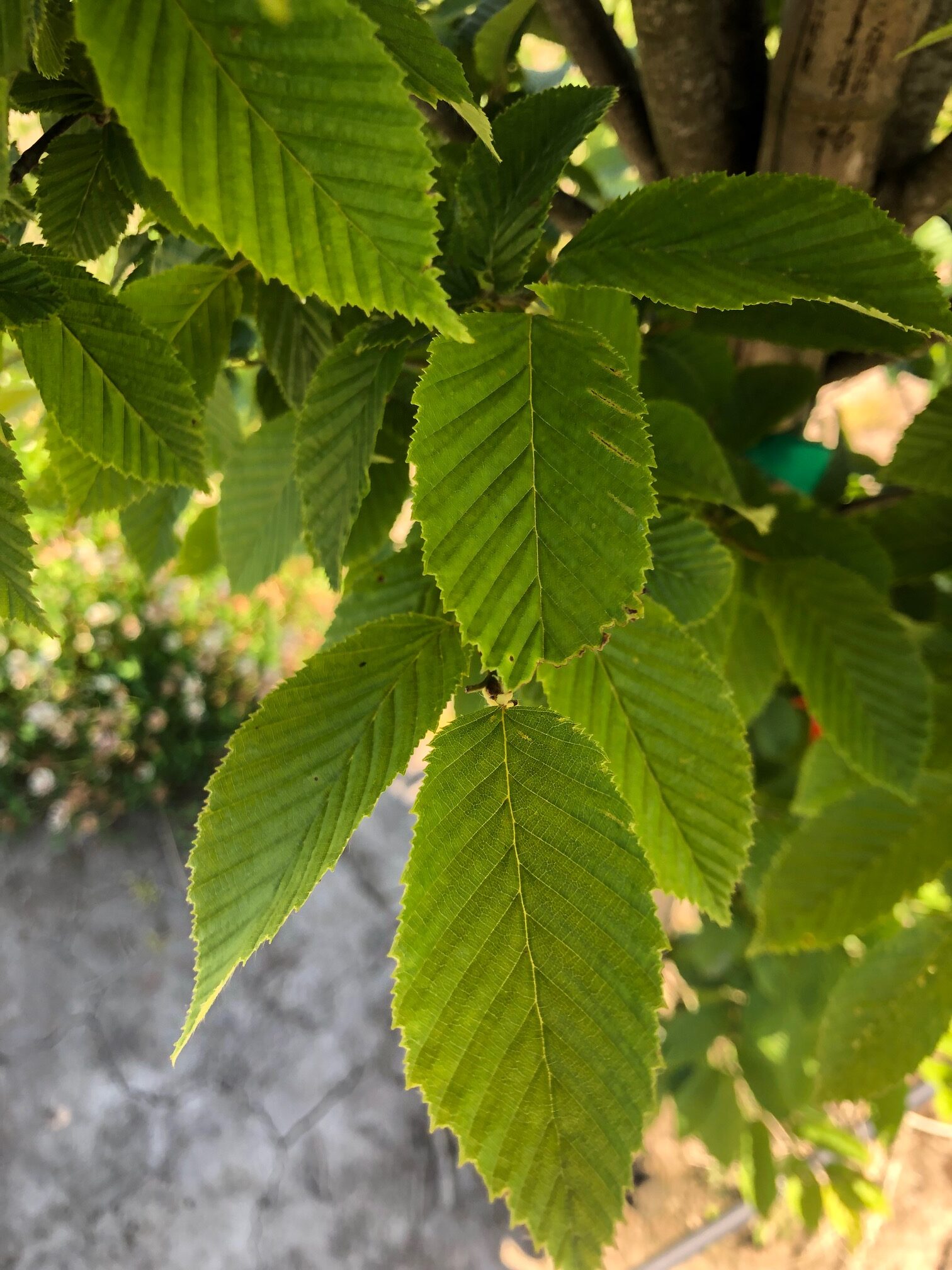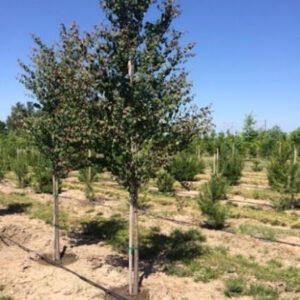Carpinus betulus ‘Fastigiata’ – Columnar Hornbeam
$250.00
Botanical Name: Carpinus betulus ‘Fastigiata’
Alternate Names: Common Hornbeam, European Hornbeam, Columnar European Hornbeam, Pyramidal European Hornbeam
The Columnar Hornbeam, also known as the common or European Hornbeam, is a medium-sized, deciduous tree. ‘Fastigiata’ means a narrow form with upright branches, or narrowing towards the top. Both of these descriptions apply to this tree. Its growth as a juvenile tree is narrow and columnar, and as it matures it develops into the shape of a teardrop with a rounded, pyramidal form.
The Columnar Hornbeam grows to a height of 30-40 feet and a width of 20-30 feet. This narrow form lends itself to narrow planting sites, such as screening between houses, lining driveways, or walkways. It tolerates substantial pruning and is effective as a hedge. This selection also makes a great shade tree as well as a useful street tree with its tolerance for pollution.
The leaves of the Columnar Hornbeam are a handsome, deep green with sharply-toothed margins. They maintain their color and form throughout the growing season, showing good resistance to foliar diseases. In the fall, the foliage gives a modest display, turning yellow, orange, and brown colors. This cultivar is prized for its narrow, attractive form rather than its seasonal color.
The flowers are similar to that of birch trees (Betulas). There are both male and female catkins that emerge before the leaves appear in the spring. The male flowers are around 1.5 inches long and the female flowers are up to 3.5 inches long. The following fruits are small nutlets that hang from the branches in clusters up to 5 inches long in the summer. The Columnar Hornbeam’s bark is an attractive, smooth gray.
Product Dimensions
The purchased tree will be within the ranges below. If you require a specific size, please call us at
(503)585-8337
Please review Product shipping dimensions to ensure size of vehicle used for pickup of tree is sized correctly.
Click here for more information.
- Caliper Range p
- 1 3/4"-3"
- Height Range p
- 8-12'
80 in stock
| Shape |
Columnar, Pyramidal, Low Branching
|
| Flower Color |
Green, Yellow
|
| Flowering Time |
March
|
| Fall Color |
Orange, Yellow
|
| Growth Rate |
Fast
|
| Uses |
Hedge, Lining Parkways, Lining Walkways, Screening, Shade Tree, Street Tree
|
| USDA Zones |
4, 5, 6, 7, 8
|
| Mature Height |
30'-40'
|
| Mature Width |
20'-30'
|
| Exposure |
Full Sun, Partial Shade
|





